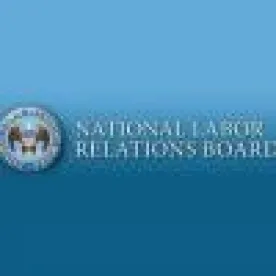In Miller & Anderson, 364 NLRB No. 39 (2016), the National Labor Relations Board (“NLRB”) ruled that employer consent would no longer be required for bargaining units consisting of employees both solely and jointly employed. “Employer consent,” wrote the NLRB, “is not necessary for units that combine jointly employed and solely employed employees of a single user employer.” Id. at 2. The NLRB added that “we are persuaded that a unit combining employees solely employed by a user employer and employees jointly employed by that same user employer and a supplier employer logically falls within the ambit of a 9(b) employer unit.” Id.
In this case, the union sought to represent employees of an HVAC contractor, Miller & Anderson, plus some additional employees furnished through a separate staffing company, Tradesmen International. Some employees were solely those of Miller & Anderson and others were jointly employed by both companies. The union’s petition was dismissed by the Regional Director because the two employers did not consent to a combined unit. The Regional Director relied on the NLRB’s decision in Oakwood Care Center, 343 NLRB 659 (2004) (employers’ consent to bargaining units of solely and jointly employed employees required). On appeal, the NLRB overruled Oakwood Care Center, reversed the Regional Director, and reinstated the petition. The NLRB held that consent to multi-employer bargaining by both employers is not necessary for units that contain employees who are solely and jointly employed, provided the petitioned-for unit is appropriate under the NLRB’s traditional community of interest standards (i.e., whether the employees share wages, hours, and other terms and conditions of employment).
Miller & Anderson builds upon the NLRB’s decision in Browning-Ferris, 362 NLRB No. 186 (August 27, 2015), in which the NLRB reinterpreted the joint employer concept and broadened the circumstances in which it would find that two or more entities constitute a joint employer. The NLRB ruled that “it will no longer require that a joint employer not only possess the authority to control employees' terms and conditions of employment, but also exercise that authority,” and that the “[r]eserved authority to control terms and conditions of employment, even if not exercised, will now be relevant to the joint-employment inquiry.” The NLRB also held that it will no longer require that a statutory employer's control must be exercised directly and immediately. Control exercised indirectly - such as through an intermediary - may now establish joint-employer status.
Together, Miller & Anderson and Browning-Ferris make it easier for unions to organize groups of employees in units that the NLRB would previously have found inappropriate, and conversely they make it more difficult for employers to plan for the use of contingent employees. The decisions also raise questions for employers that have existing collective bargaining units and find it necessary to supplement their work force by using outside staffing companies. Are staffing company employees to be considered part of the bargaining unit? Do staffing company employees have access to the grievance procedure of the employer to whom they are assigned? What, if any, seniority or recall rights can staffing company employees claim? To what extent may a union seek to apply its collective bargaining agreement to the staffing company, beyond the operations of the user employer? Employers would be wise to discuss these, and other questions, with labor counsel.




 />i
/>i
